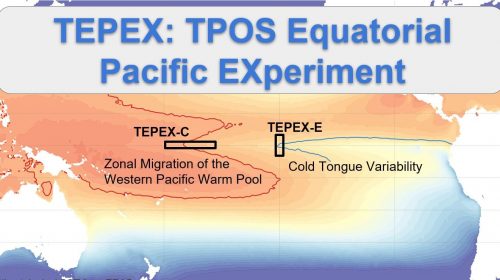The California Current System (CCS) is a key ecological and recreational region that has historically experienced episodes of low dissolved oxygen (DO), which impacts marine creatures that depend on oxygen to breathe. A new study funded by a partnership between CPO’s Climate Observations and Monitoring (COM) Program, Climate Variability and Predictability (CVP) Program, and NOAA’s Global Ocean Monitoring and Observing (GOMO) Program investigates current DO variations and provides recommendations for predicting future changes in DO. The results, published in JGR Oceans, demonstrate that DO coastal anomalies flow offshore and mix into the large-scale ocean circulation. Researcher Brendan Carter of the University of Washington and NOAA’s Pacific Marine Environmental Laboratory is supported by COM, CVP, and GOMO to leverage measurements from Biogeochemical Argo (BGC) floats to advance our understanding of climate variability and change and enhance NOAA’s ability to model and predict the Earth System.
Using observations and models to examine the CCS and compare models with varying resolutions, the study demonstrates the significance of water mixing and distinct ocean circulation patterns in the region. Understanding DO variability in the CCS is crucial due to its impact on marine ecosystems and fisheries. The study’s findings underscore the role of coastal regions and eddy dynamics in driving offshore DO variability, highlighting the need for improved observational coverage to validate models and track circulation changes. The authors recommend strategic placement of BGC Argo floats and other observational platforms to monitor environmental shifts and inform marine resource management, particularly focusing on areas with sparse data coverage and those vulnerable to circulation changes. This project will continue to work toward developing a new and expanded data product that will help in realizing the full potential of the BGC float observing strategy.
For more information, contact Clara Deck.
Image credit: U.S. Fish and Wildlife








